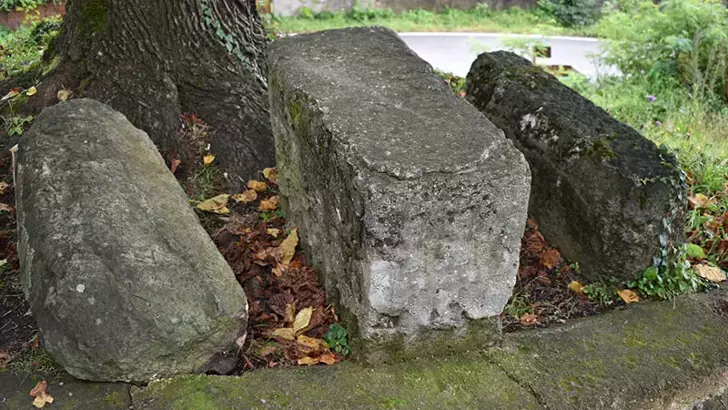A Roman milestone dating back to 239 AD, during the reign of Emperor Gordianus III, was recently discovered in the Fatsa district of Ordu province, northeastern Türkiye. This remarkable find, unearthed near the Laleli Central Mosque in Fatsa’s Bolaman neighborhood, offers a rare glimpse into the ancient Roman road systems and the empire’s engineering prowess, which helped unify distant provinces.
Roman milestones, or milliarium, were essential navigational markers positioned along the vast network of Roman roads. These stone markers, set one Roman mile apart (approximately 1,480 meters or 4,850 feet), typically displayed inscriptions noting the name of the road, the distance to the nearest destination, and often included the name of the emperor or the official overseeing the construction or maintenance of the road. Such milestones served not only as guides for travelers but also as symbols of the Roman Empire’s organizational and logistical capabilities. Many of these markers have withstood the centuries, providing historians with valuable insights into Roman-era infrastructure and administrative reach.
The discovery of this milestone, nearly 1,800 years old, has an interesting twist: it had been repurposed as a seat for many years by locals attending the mosque. The milestone was first identified by Aydın Bal, a literature teacher at Fatsa Cahit Zarifoğlu High School, who noticed the unusual stone near the mosque and reported it to local authorities. Responding to his discovery, Fatsa Municipality Culture Director Cevat Erbil and Dr. Seçkin Evcim, an art historian from Ordu University, investigated the stone. Dr. Evcim and his team confirmed that it was indeed a Roman milestone, a rare find in this region of Türkiye.
Upon examining the milestone, the team uncovered an inscription honoring Emperor Gordianus III, whose name appears on the stone, suggesting that he had sponsored the repair or construction of the road. The inscription was translated by Prof. Dr. Hüseyin Sami Öztürk, an expert in epigraphy and linguistics from Marmara University, who determined that the emperor’s name was indeed inscribed as a tribute and that the road had been rebuilt under his rule. Dr. Evcim believes the stone originally marked the second mile of a road constructed during the Roman period to connect the natural harbor between Bolaman and Yalıköy, facilitating transportation and trade along the Black Sea coast.
Interestingly, the milestone was not in its original location. Local accounts suggest that it was first found in the 1970s when the foundation of the mosque was being laid, at which point it was tilted on its side and used as a makeshift seat. Now, thanks to local government support and the municipality’s assistance, the stone has been relocated to the Ordu Museum for preservation and further study. Although this discovery offers significant historical value, additional research will be required to better understand its original placement and function within the broader network of Roman roads.
Fatsa’s history stretches back centuries before the Roman Empire. The area was initially settled by groups such as the Cimmerians and later by Pontic Greeks. By 62 AD, during the reign of Emperor Nero, this region became part of the Roman Empire. In approximately 295 AD, Emperor Diocletian (284–305 AD) restructured the province, dividing it into three smaller provinces, including Pontus Polemoniacus. This smaller administrative region was named after Polemonium I, a Roman client king, and was designated as its capital.
The discovery of this milestone is the first of its kind in the Ordu region and serves as an important reminder of the Roman Empire’s enduring influence on the area’s infrastructure and development. The existence of Roman roads and trade routes in this part of Türkiye points to Fatsa’s role as a significant regional hub connecting various settlements along the Black Sea. Furthermore, the milestone underscores the Romans’ ability to project their power and influence over far-flung territories through extensive engineering and logistical planning.
The Fatsa milestone’s inscription and the context of its discovery add a unique layer to our understanding of the Roman Empire’s reach into northeastern Anatolia. As archaeologists continue their research, it is hoped that further insights will emerge regarding this ancient network, revealing how Roman roads supported not only travel and commerce but also the cultural and administrative cohesion of an empire that spanned three continents.
